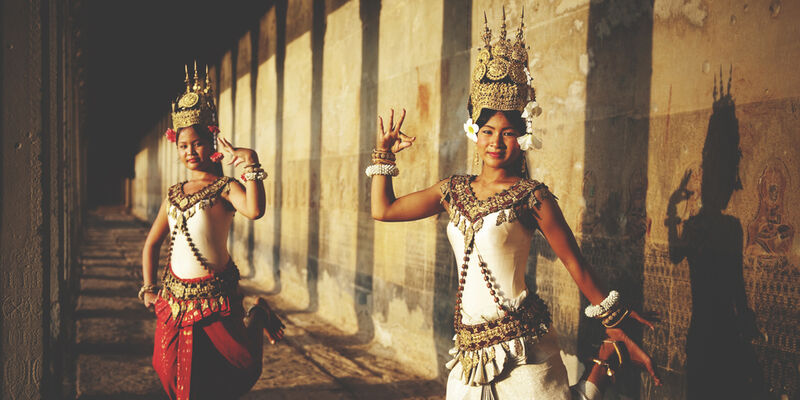Cambodia is a country with great respect for history and tradition, and nowhere is this more evident than when it comes to their ballet dancing, known as Apsara. This delicate dance form goes back to the 7th century, as one can see from the images etched into the walls of ancient temples. The talented dancers performing year-round nationwide are riveting to watch.
What is Apsara?
Apsara dancing has its roots in Hindu and Buddhist mythology. According to the myths, Apsaras were beautiful female creatures that descended from heaven to entertain both gods and rulers with their enchanting dance. These ethereal beings have been immortalized in stone carvings at Sambor Prei Kuk temples in Kampong Thom province, in case you want to see them.
Samudra Manthan
Legend has it that they were born from Samudra Manthan (Hindi) or the Churning of the Ocean of Milk. Their genesis is depicted on a huge bas-relief carved on the walls of Angkor Wat temple, which lies at the heart of Angkor Wat Archaeological Park, the most famous tourist attraction in the country.
The Apsaras were believed to be the wives of servants at the palace of the King of Gods, who protected him by seducing mortals who threatened his supremacy. Nobody could resist their charm and beauty. The dance moves reflect the idea of entrapment, slow-paced and mesmerizing.
The Main Feature – Hand Gesture
The main feature of the dance is hand gesture – it involves thousands of gestures. Each finger movement has its own distinct meaning, from references to Buddhist and Hindu myths and legends to worshiping natural spirits, for example by depicting a flower in bloom.

